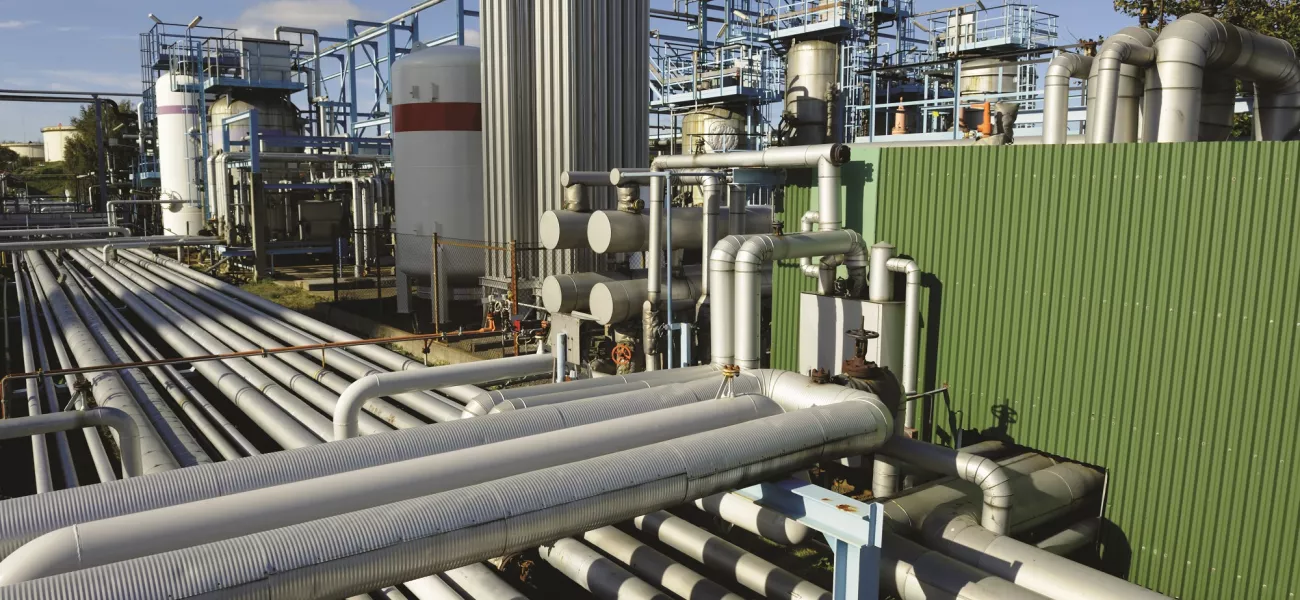
Lucas Young, Axis communications, looks at the role of explosion-protected cameras in environments of high risk, and their capacity for improving security and operations.
An ever-changing threat landscape necessitates a continuous requirement to protect our critical national infrastructure sites, from electrical substations to water reserves and oil and gas production plants. Many critical national infrastructure (CNI) sites are hazardous locations where the potential for combustible materials to cause explosion is a real threat. In such locations, any electrical equipment installed could produce an ignition source due to fluctuations in temperature or electrical arcing. And this includes the use of CCTV, and its modern successor, a network video camera system.
The use of video camera technology to aid in the protection of many CNI sites and, in addition, to monitor operations for efficiency, and to ensure health and safety, is growing rapidly. It should be clear that installing any equipment, including network cameras, that is not regulation standard within such an environment would be potentially dangerous. Therefore, camera technology which is to be employed must be specifically designed for safe operation, complying with ATEX and IECEx standards, among others, depending on the region in question.
Mitigating explosion risk
Using network cameras for the protection of hazardous areas may sometimes require them to be placed close to combustible materials. Housing customised IP cameras within a dedicated airtight enclosure removes any risk that the technology might present, making them completely safe to use in such environments. This means that as well as their use for perimeter protection at the edge of a site, or near entrance and exit points, they can also be used deep within the heart of operations, very close to, or even inside machinery.
There is a great demand for explosion-protected cameras within a wide range of industries, both relating to our critical national infrastructure and otherwise, from food production with pressurised silos, to oil refineries, pharmaceutical manufacturing, and any other carefully controlled environments where an electrical spark could have serious implications.
High quality surveillance and analytics
With specifically designed cameras and camera housings opening up the possibility for new and innovative security and surveillance applications within a number of location and environments, attentions must turn to the capabilities of the cameras themselves and their capacity for meeting need. Cameras intended for such environments must be smart; capable of capturing excellent image quality regardless of lighting conditions, while minimising bandwidth and storage requirements. On-board analytics and deep learning capabilities mean that cameras can be trained to identify or to respond in a way that can be customised to individual locations or in accordance with industry requirements.
Such examples include: the raising of ‘man-down’ alarms, proving invaluable in areas where lone workers operate, and the presence of gases or chemicals mean that any falls or injuries must be detected and reported immediately; temperature alarm cameras, used to detect unexpected sources of heat before they become fire; smoke detection solutions that issue an alert upon visual confirmation of smoke; and hard hat detection alarms triggered to warn of staff members who are not complying with regulations.
A cyber secure solution
As with all technology, there are inherent risks when IoT devices are installed on to a network. Network surveillance cameras which are not manufactured according to rigorous cybersecurity principles can be used as a backdoor to compromise an organisation’s IT network, either from an insider threat or a remotely triggered assault. In the case of critical national infrastructure, the theft of control data or sabotaging of systems could have catastrophic implications. Secure technologies, built with cybersecurity considerations at the forefront, should therefore form an essential part of any enterprise asset protection strategy.
Businesses looking to adopt such solutions should look to technology partners who can demonstrate evidence of operation in accordance with advanced security principles. Accolades such as Secure by Design, Secure by Default, awarded by the Surveillance Camera Commissioner (SCC), and the Cyber Essentials Plus scheme, demonstrate high levels of cybersecurity awareness aligned with regulation and best practice. In addition, an independently accredited ISO 27001 certification demonstrates an adherence to information security best practice in relation to the processing and storing of information, including requirements for risk assessment and risk treatment.
The success of the IoT should not be hampered by weaknesses in physical systems and should be secured across every touchpoint and unexpected vulnerability. Network cameras, built from the ground up with cybersecurity considerations at the forefront, offer complete peace of mind when used for applications across industry. Their advanced capabilities mark them as essential for both security and operations related use. When enclosed in an airtight explosion proof casing, such smart technology offers unparalleled detection capabilities to protect and secure assets and people within the most hazardous of locations; a true example of innovating for a smarter safer world.